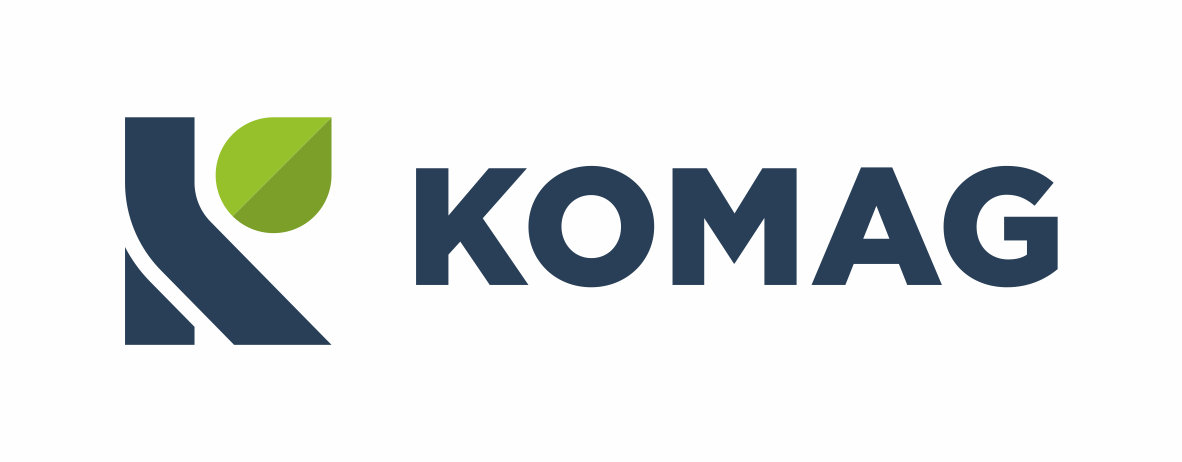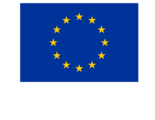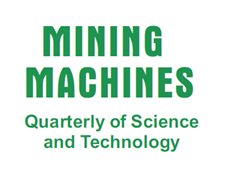- Numerical simulation of mixing and aeration of flotation suspension in the chamber of pneumo-mechanical flotation machine
GICALA B., LENARTOWICZ M. - Vibrating movements and screening process on two-frequency screen deck
MODRZEWSKI R., WODZIŃSKI P. - Use of sieves of high capacity in classification line as well as in beneficiation of fine and very fine grains
ROLNIK R. - Analysis of acoustic field distribution in the environment of selected power objects
AUGUSTYN A. - Analysis of process of servicing repairs of mining machines
ROZMUS M. - Modernization of mining industry and new occupational hazards associated with emission of magnetic fields
FIRCZYK W., BUDZYŃSKI Z. - Requirements as regards measuring-and-research equipment at accredited testing laboratories
ZAJĄC R., WOJTASZCZYK M. - New priorities, rules for application and realization of projects in research programme of the Research Fund for Coal and Steel in the light of decision of Board dated 29th April 2008
HORDYNIAK E., DUDZIAK M.
Numerical simulation of mixing and aeration of flotation suspension in the chamber of pneumo-mechanical flotation machine
GICALA B., LENARTOWICZ M.
The results of numerical simulation of suspension flow through the chamber of flotation machine IZ-12 type are presented in the paper. The simulation is carried out for the nominal operation parameters of the machine. The content of flotation chamber is treated as two-phase system: solid particles suspension-air bubbles. The transient simulation was carried out for 3D geometry of the flotation machine. The turbulent flow has been assumed. The velocity flow field and air bubbles distribution have been determined.
Vibrating movements and screening process on two-frequency screen deck
MODRZEWSKI R., WODZIŃSKI P.
Initial results of research project that has been started at the end of 2007 in Division of Processing Apparati at Lodz Technical University, and concerned two-frequency screens were presented in this paper. It is known that trajectory of vibrating screen has decisive meaning in achieving possible best technological parameters of the machine. So we search for such trajectories of vibrating screens which would allow for possibly intensive grains separation in the layer that moves on the screen. Trajectories possible to be obtained on the two-frequency screen favour intensification of separation process. That is why we expect that two-frequency screens can have much better technological parameters in comparison to classical vibrating screens used in the mining industry. Projects currently realized in Lodz technical University are aimed at kinematic and operational tests of experimental screen of dimensions 1.5 x 0.5 metre and weight 350 kg. Foredesign of the industrial machine will be developed on the basis of test results. The screen will be installed in the Polish mining industry and used for screening fine and very fine particles.
Use of sieves of high capacity in classification line as well as in beneficiation of fine and very fine grains
ROLNIK R.
Use of sieves of high capacity in classification line as well as in beneficiation of fine and very fine grains were given in the paper. The use of high productive and reliable sieves can ease water circuits, what in result enable reducing power consumption. Very interesting solution of DERRIC CORPORATION – five deck Stack Sizer screen equipped with polyurethane screen of high clearance were described.
Analysis of acoustic field distribution in the environment of selected power objects
AUGUSTYN A.
Noise is extremely harmful factor and the need of its reduction results from negative effects it causes. Guidelines as regards reduction of over-standard noise emission were included in formal requirements which are in force. Power objects are significant sources in exceeding of permissible noise level. Acoustic field of strongly diffusive field features, which is present in the area of power objects, is one of the most characteristic features of power objects. Characteristics of source, which is designed in such way, makes it difficult to carry out both experimental tests and model tests. The paper is an attempt of approaching currently used methods of identification of significant noise sources, as well as determination of acoustic field distribution. A method of conducting the analyses of acoustic field distribution of power objects, which is alternative to classical method, was suggested. A validation of testing methods, which are in force, was also conducted, proving their low usefulness in analyses of power objects. It seems that intensity method, which was rarely used so far, is one of means, which enable reduction of significant part of measuring errors, as well as identification of acoustic disturbances.
Analysis of process of servicing repairs of mining machines
ROZMUS M.
Repairs conducted at the contractor site, i.e. user of machine, at the stand of machine operation, are the paper’s subject of interest apart from industrial services. These repairs are called servicing repairs. Conducting the servicing repairs by factory or licensed representative of factory results from geographical dispersion of machines’ users in relation to the factory. The factory realizes repairs at machines’ users who are close to the factory. The servicing repairs at machines’ users who are away from factory are conducted by licensed representatives of factory.
Modernization of mining industry and new occupational hazards associated with emission of magnetic fields
FIRCZYK W., BUDZYŃSKI Z.
Hazards associated with emission of magnetic fields were discussed in the paper on the basis of the following documents:
Directive of European Parliament and Council as regards harmonization of legal regulation in member countries concerning protective machines and systems designed to be used in rooms threaten by explosive hazard 94/9/EC ATEX Directive,
Directive of European Parliament and Council as regards exposure of workers to magnetic fields, 2004/40/EC,
Decree of Ministry of Labour and Social Policy dated 29th November 2002 for highest permissible concentrations and intensities of harmful substances (Journal of Laws No. 217 from 2002, pos. 1833)
Decree of Ministry of Environment dated 30 October for permissible levels of magnetic fields as well as for the method of checking these levels (Journal of Laws No. 192 from 2003, pos. 1883).
Requirements as regards measuring-and-research equipment at accredited testing laboratories
ZAJĄC R., WOJTASZCZYK M.
Measuring-and-research equipment, which in principle decides about the quality of measurements, control and tests, has to be properly legalized, calibrated and/or verified as well as properly supervised. The supervision over measuring-and-research equipment is one of significant components of quality management system. Basic documents including requirements as regards measuring equipment are included in, among others, PN-EN ISO/IEC 17025:2005 and PN-EN ISO 10012:2004 Standards. The paper presents general assumptions as regards supervision over measuring-and-research equipment.
New priorities, rules for application and realization of projects in research programme of the Research Fund for Coal and Steel in the light of decision of Board dated 29th April 2008
HORDYNIAK E., DUDZIAK M.
The Research Fund for Coal and Steel was established by the decision made within Niece Treaty after termination of the European Coal and Steel Community. The next decision of Board – 2003/78/EC determined the rules of formation and functioning of Research Programme of this Fund, aim of which is to support the competitiveness of European sectors associated with coal and steel industry. It is complementary in relation to other activities and programmes (such as Framework Programme)






 Badanie bezpieczeństwa wyrobów
Badanie bezpieczeństwa wyrobów Klaster Maszyn Górniczych
Klaster Maszyn Górniczych